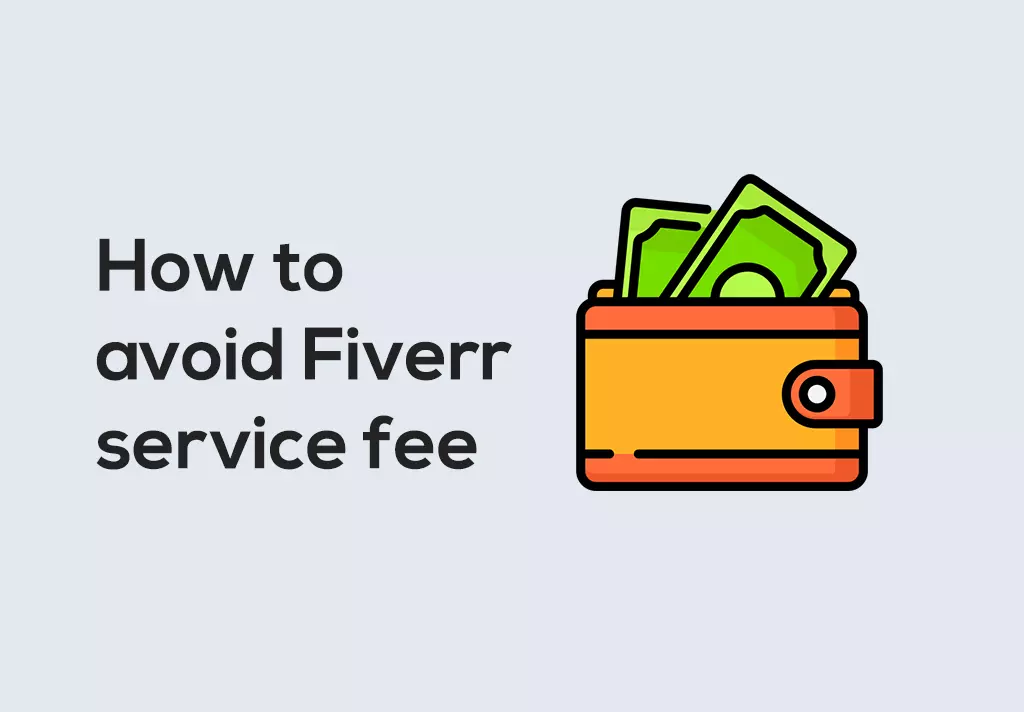If you've ever ventured into the world of freelancing, you've likely come across Fiverr. But have you paused to ponder why this platform charges a service fee? In the realm of online gig economy platforms, understanding these costs is essential for both freelancers and buyers. This post will take you through what Fiverr is all about and shed light on the rationale behind its service fees.
What is Fiverr?

Fiverr is an online marketplace that connects freelancers offering various services with clients seeking those services. Launched in 2010, it revolutionized the way people think about freelancing. Instead of the traditional model where services were billed hourly, Fiverr originally offered services for as low as five dollars, hence the name. However, over the years, this approach has expanded, and now you can find gigs priced anywhere from $5 to hundreds or even thousands of dollars!
It's a vast platform encompassing a variety of categories, including:
- Graphic Design: Logo creation, marketing materials, and more.
- Writing and Translation: Article writing, proofreading, and language translation.
- Digital Marketing: SEO services, social media management, and content marketing.
- Video and Animation: Video editing, animation creation, and explainer videos.
- Programming and Tech: Software development, website design, and app development.
Fiverr acts as a facilitator, ensuring that transactions between buyers and sellers go smoothly. By offering a user-friendly interface, secure payment system, and an extensive range of options, it allows buyers to quickly find the right talent to meet their needs. In the midst of this convenience, service fees come into play, which we will explore in detail later on.
Also Read This: Can You Get in Trouble on Fiverr?
Breakdown of Fiverr's Service Fees

When you decide to use Fiverr, it’s essential to understand how their service fees work. These fees can sometimes catch freelancers and buyers off guard, so let’s break it down.
Fiverr's service fees typically consist of two parts: the buyer's fee and the seller's fee.
- Buyer's Fee: When a buyer purchases a gig, Fiverr charges a standard service fee on top of the gig price. This fee usually ranges from $2 to 5, depending on the total price of the gig sold. For instance, if you buy a gig for $50, you might pay a total of $55 with a $5 service fee.
- Seller's Fee: On the flip side, Fiverr takes a cut from freelancers for every gig sold. Typically, this is around 20% of the total payment received. So, if a seller delivers a service worth $100, they’ll only take away $80 after Fiverr's fee is deducted.
To illustrate this with a simple table, here’s how it looks:
| Service Value | Buyer Pays | Seller Receives | Fiverr's Fee |
|---|---|---|---|
| $50 | $55 (with $5 fee) | $40 | $10 (20% fee) |
| $100 | $105 (with $5 fee) | $80 | $20 (20% fee) |
Understanding these service fees is crucial, as it impacts both buyers and sellers. It can help buyers budget better and help sellers price their services effectively.
Also Read This: Understanding Running Time on Fiverr: What It Means for Your Projects
Why Does Fiverr Charge Service Fees?
So, why in the world does Fiverr apply these service fees? To some, it might feel like an unnecessary notch in the price, but it makes sense when you look at the bigger picture.
- Platform Maintenance: Running an online platform isn't cheap. Fiverr needs to keep its website, payment systems, and user interfaces running smoothly. The service fees contribute to these operational costs.
- Customer Support: Fiverr prides itself on providing adequate support to both buyers and sellers. Service fees help fund a dedicated customer support team that can assist users whenever necessary.
- Marketing and Promotion: To stay competitive, Fiverr invests significantly in marketing to attract new users. The service fees help cover these promotional efforts so that freelancers can have access to a larger pool of potential clients.
- Quality Assurance: Fiverr aims to maintain a high standard of service, ensuring that buyers get quality gigs. The fees contribute towards measures for monitoring and maintaining this standard, helping to filter out unreliable freelancers.
Simply put, the service fees are Fiverr's way of ensuring they can continue to provide valuable services while connecting freelancers with clients worldwide. They act as a bridge, allowing for smooth transactions and a reliable platform.
Also Read This: Where to Find Your Favorites on Fiverr
The Impact of Service Fees on Buyers and Sellers
When diving into the world of freelancing on platforms like Fiverr, both buyers and sellers often wonder about the impact of service fees. It's a key component that shapes the overall experience of using the platform.
For buyers, service fees can feel like a burden. Each time they make a purchase, they may notice a small percentage added to their total cost. This fee helps maintain the platform but can also deter potential clients, especially if they are comparing prices across various freelance sites. Here's how these fees typically affect buyers:
- Budget Constraints: Some buyers may have a strict budget. Service fees can push them over that limit, leading to disappointment or reconsideration of their freelance choices.
- Expectations of Value: Clients often expect high-quality outputs that justify the costs. If they feel the fee does not equate to a superior service provided, it can lead to dissatisfaction.
On the flip side, sellers also feel the weight of these service fees. Anytime a seller delivers a job, a percentage of their earnings is withheld as a service fee, which can lower their net profit. Here are a few impacts on sellers:
- Pricing Strategy: Sellers might have to increase their prices to cover the service fee, which could deter potential buyers seeking affordable options.
- Profit Margin Concerns: With fees affecting their bottom line, freelancers need to balance competitive pricing with maintaining a healthy profit margin.
Ultimately, service fees play a significant role in the dynamics of Fiverr's marketplace, affecting both buyers and sellers. Understanding this impact allows users to make informed decisions as they navigate their freelance journeys.
Also Read This: How I Made $1,000 in a Week on Fiverr
Alternatives to Fiverr and Their Service Fees
If you're evaluating Fiverr’s service fees and wondering if there are better options out there, you’re not alone. Several freelance platforms offer alternative structures that may appeal to different buyers and sellers. Let’s take a closer look at some of these platforms and the service fees they impose.
| Platform | Service Fee for Buyers | Service Fee for Sellers |
|---|---|---|
| Upwork | Varies (typically starts at 3%) | 20% on first $500, reducing to 10% for $500.01 to $10,000, and 5% thereafter |
| Freelancer | Varies (around 3% of project value) | 10% or a minimum fee depending on the project type |
| PeoplePerHour | 3.5% on payments | 20% on first £500, decreasing to 7.5% thereafter |
| Guru | Varies (around 2% to 3%) | 5% to 9% depending on membership level |
As seen in the table above, each platform has its own structures and rates for service fees. When considering alternatives to Fiverr, it's crucial to weigh these fees against the overall value and quality of services offered. Some platforms might have lower fees but could lack the user-friendly interface that Fiverr is known for, while others might offer a more robust set of features despite charging higher fees. Ultimately, it's about finding the right balance that meets your needs as a buyer or seller.
Also Read This: How to Create Gigs Images for Fiverr on Photoshop
7. Understanding Value Beyond the Cost
When we dive into the world of freelancing, especially on platforms like Fiverr, it's easy to get caught up in the numbers. However, just focusing on the service fee might have us missing the bigger picture: the value that comes with the cost. So, what does this value include?
- Access to a Global Marketplace: Fiverr connects freelancers with clients all around the world. This global reach means you can tap into a diverse range of projects, audiences, and experiences that wouldn’t be possible if you were just relying on local opportunities.
- Trust and Security: Fiverr handles payments and provides a platform that both freelancers and clients can rely on. With Fiverr, you're not just securing a job; you're also ensuring that you get paid. This minimizes the risk of scams or unpaid work.
- Marketing Support: For many freelancers, marketing their services can be a full-time job in itself. Fiverr provides a platform that does much of the heavy lifting for you, meaning you can focus on your craft instead of chasing down leads.
- Customer Support: Whether you're a freelancer or a client, having support available is crucial. Fiverr offers various support channels to help resolve disputes or answer questions, adding another layer of security and trust.
From a freelancer's perspective, the service fee might seem like a downside at first. However, when you factor in the benefits that come along with it, the balance shifts. It’s about seeing the *value behind the cost and understanding that investing in this platform can lead to diverse opportunities and long-term benefits.
8. Conclusion
In wrapping up our discussion on why Fiverr charges a service fee, it’s clear that while costs are a natural consideration, they don’t tell the whole story. Freelancing is an exciting avenue of work, but it comes with its unique challenges. Fiverr’s service fee, while sometimes viewed as an additional burden, plays a crucial role in maintaining the integrity, security, and efficiency of the platform.
As freelancers, we must remember that every platform incurs costs to provide the services we rely on. The fees are there to ensure we have robust tools, support, and a vast marketplace at our fingertips. By understanding and embracing these costs, we can focus more on honing our skills and delivering quality work to clients.
So, the next time you see that service fee pop up, take a moment to consider the broader implications. Think about the opportunities you're accessing, the security you’re gaining, and the community* you’re joining. Freelancing is not just about the money; it’s about crafting a career that aligns your passion with practical rewards. Happy freelancing!



